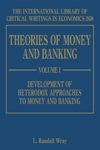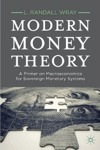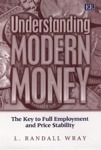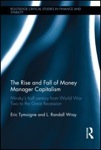By Joe Firestone
(Cross-posted from Correntewire.com.)
(Author’s Note; Many thanks to lambert strether, beowulf, and Yves Smith for their reviews of this post)
Well, the debt limit crisis is upon us. Treasury Secretary Geithner says the US Government will not be able to meet all its obligations on August 3, unless the debt ceiling is increased by Congress. The Secretary says he is out of moves to extend this date. I don’t think that’s true. I think he can use proof platinum coin seigniorage to supply all the money needed to spend Congressional Appropriations. I do not know if the Administration knows about this idea yet. It may, and it may simply have been unwilling to mention it for its own reasons. But just in case it doesn’t know, and also for the sake of the rest of us, I’m making another attempt to state the case for using coin seigniorage, so that as many people as possible know that the President has an alternative to the “shock doctrine,” make a deal approach to cutting essential spending and services including the social safety net, in return for getting $2.6 Trillion more in debt issuance authority.
The idea of using coin seigniorage to remove the need for issuing debt, and so to always stay under the debt ceiling is due to a commenter (and occasional blogger) on economics and politics blogs whose screen name is beowulf. He first presented the idea in comments and then posted the seminal blog on coin seigniorage.
Throughout the next six months, a number of other posts appeared at various sites (See here for links) with increasing frequency as the debt limit problem received more attention.
In the last few days, as coin seigniorage itself climbed up the hierarchy of public awareness, Felix Salmon and Matt Yglesias, both well-respected, mainstream, and professional bloggers, have mentioned the proposal while taking issue with it for reasons I’ll analyze below. Before, I do that however, here’s what’s involved in proof platinum coin seigniorage,
Congress provided the authority, in legislation passed in 1996, for the US Mint to create platinum bullion or proof platinum coins with arbitrary fiat face value having no relationship to the value of the platinum used in these coins. These coins are legal tender. So, when the Mint deposits them in its Public Enterprise Fund account at the Fed, the Fed must credit that account with the face value of these coins. This difference between the Mint’s costs in producing the coins and the credit provided by the Fed is the US Mint’s profit. The US code also provides for the Treasury to periodically “sweep” the Mint’s account at the Federal Reserve Bank for profits earned from these coins. Coin seigniorage is just the profits from these coins, which are then booked as miscellaneous receipts (revenue) to the Treasury and go into the Treasury General Account (TGA), narrowing the revenue gap between spending and tax revenues. Platinum coins with huge face values e.g. $2 Trillion, could close the revenue gap entirely, and technically end deficit spending, while still retaining the gap between tax revenues and spending.
Recent Comments from the Mainstream
Here’s Felix Salmon’s treatment at Reuter’s:
Even if Treasury can still sell bonds, however, that doesn’t mean for a minute that breaching the debt ceiling is something which should be considered possible for the purposes of the current negotiation. Tools like the 14th Amendment or even crazier loopholes like coin seignorage would be signs of the utter failure of the US political system and civil society. And that alone could mean the loss of America’s status as a safe haven and a reserve currency. The present value of such a loss? Much bigger than $2 trillion. (Coin seignorage, if you’re wondering, is the right that Treasury has to mint a couple of one-ounce, $1 trillion coins and deposit those coins in its account at the New York Fed. It could then withdraw cash from that Fed account to make all the payments it wanted.)
Felix Salmon does give an acceptable one sentence overview of the proposal, but doesn’t make clear that there could be even a single coin (not a “couple of coins”) of arbitrary value produced by the US Mint. More importantly, he doesn’t make clear why using coin seigniorage would be a sign “. . . of the utter failure of the US political system and civil society,” or why using it would be “. . . breaching the debt ceiling.” He also doesn’t say why he lumps in a 14th Amendment challenge to the debt ceiling with coin seigniorage as crazy ideas.
Addressing these points one by one, first, it’s true that the Congress hasn’t been able to come to agreement on the debt ceiling, but it’s hard to see why this is a sign of “the utter failure” . . . “of civil society.” Even more, the US political system has provided the tool of coin seigniorage as a legal, if not customary, way of generating revenue in addition to taxing and borrowing. Why does this count as “crazier” idea or a failure of the political system? From my point of view the only failure here is the President’s in not using coin seigniorage, or perhaps not yet even knowing about it. But if this is a failure, I don’t see that it’s a systemic one as much as it is a failure of this Administration to look for alternative views that go beyond its own knowledge and imagination.
Second, it’s hard to see why using coin seigniorage would be “breaching the debt ceiling.” Certainly, challenging the Constitutionality of the debt ceiling and overturning the legislation mandating it might be described as “breaching” it. Also, just ignoring it on grounds that it is unconstitutional might be described in the same way. However, using proof platinum coin seigniorage with very high face value coins just spends Congressional appropriations, including paying down debt so that it’s way below the debt ceiling, or even completely eliminated, using perfectly legal means. It’s hard to see how this can be legitimately described as “breaching the debt ceiling.”
And, third, why does Felix Salmon think that using coin seigniorage “. . . could mean the loss of America’s status as a safe haven and a reserve currency. ” Why should a demonstration, using coin seigniorage, of the Treasury’s power to meet US obligations even when Congress is in deadlock, lead to a loss of confidence, making investment in the US look any more dangerous than it is at present, or disturbing the status of the US dollar as the reserve currency? Surely if Felix Salmon wants to make such a serious charge he should at least give readers his reasoning.
It is possible that if coin seigniorage were used on a continuing basis to close the gap between taxes and spending, then US Treasuries would no longer be a safe haven for investing USD reserves, simply because, if no more debt is issued, then no investment in Treasuries is possible. But even if that happened, a low level of interest paid by the Fed on USD reserves would still leave US dollar reserves as safe a haven for holding “risk-free” US financial assets as short-term Treasuries are right now.
It is also hard to see why coin seigniorage, if used, would interfere with the status of USD as the reserve currency. Why should it, since continuous use of seigniorage would result in gradually eliminating the national debt? And what other reserve currency would the world use? The UK pound? The Euro, with its great potential instability? The Yuan, which if it became the reserve currency would force China to give up its peg to the Dollar and to even acquire a bit of a disadvantage in trading with us? What about the Yen? Sounds OK to me, but the world seems convinced that Japan, with its 200% debt-to-GDP ratio might have runaway inflation anytime now. So, will the world take the Yen? Probably not.
What about a market basket of freely floating currencies? Well, that would be fine, but it’s hard to see how that would disadvantage us or cost us $2 Trillion. I also wonder where Felix Salmon got that estimate from. Also, is the $2Trillion an interest cost, a reduction in GDP? Is it over one year, or a decade? Isn’t it a fact, that being the reserve currency costs us exports and jobs? How does that get factored into Salmon’s $2 Trillion cost of not being the reserve currency?
Matt Yglesias is the second popular blogger mentioning coin seigniorage last week. Matt says:
This is an idea that’s circulating in Modern Monetary Theory circles, and I believe that it’s legally mistaken.
Perhaps it is. But don’t you owe it to readers to tell them why?
That said, conceptually it highlights a very accurate point. If you think of the United States government as a consolidated entity, it’s not possible for us to “run out of money” or “go bankrupt.” The government of Ireland owes euros, but it lacks the legal authority to create Euros. Governments of small developing countries often owe dollars, but lack the legal authority to create dollars. Under a gold standard, a government might owe gold and lack the physical capacity to create it. But the United States is owed dollars, and can create dollars, so it’s absurd to think that we might not be able to pay our bills.
Matt understands this very basic point of MMT, and that puts him miles ahead of most who pronounce on solvency. But it’s also important to emphasize that Governments like our own can become insolvent voluntarily. That is, if Congress fails to raise the debt ceiling, or if, in the event they fail, the President fails to use coin seigniorage or another Treasury tool to create a positive balance in the Treasury General Account (TGA) at the Fed, then we can become voluntarily insolvent – a self-inflicted wound caused by a collective failure to understand our fiat currency and monetary system.
Now what might happen is that people lose willingness to lend us dollars in the future. We also might have inflation. Money was lent in the past on the assumption that dollars would be able to purchase real goods and services. Monetization of debt would reduce the real purchasing power of dollars, and might call into question the wisdom of agreeing to lend dollars in the future. But these are different issues.
First, if, as Matt recognizes, we can’t “run out of money” then why do we need people to lend us our own currency in the future? Why can’t we use coin seigniorage indefinitely for “deficit spending?” (From a technical point of view continuous use of proof platinum coin seigniorage would end deficit spending because it would close the gap between spending and taxes with miscellaneous receipts, a class of revenue. However, the gap between taxes and spending would remain and that “deficit” represents a surplus for the non-Government sector.) If we did that we’d avoid, as time went on, most spending on interest costs projected by CBO over the next 10 years. Indeed, if we project out to 15 years based on CBO 10-year numbers, we’d avoid nearly $12 Trillion in projected interest costs. Why borrow our own money back at all? The answer is we don’t need to. So, we don’t really have to care whether people want to lend us back our own money, or not.
Second, why would coin seigniorage in itself cause inflation? Coin seigniorage creates money to spend Congressional appropriations. As long as those appropriations are not so great that they exceed the potential productive capacity of our economy — and right now our output gap is around 30%, and there is no sign of Congress deciding to spend enough to close that gap — there will be no demand-pull inflation.
Would there be cost-push inflation? Not from coin seigniorage. The coins would just go into a Fed vault forever, and again the spending will be only what Congress appropriates. Coin seignorage will add to aggregate demand whenever spending exceeds taxes; but it will not cause cost-push inflation. That is caused by suppliers or speculators who are distorting markets. And the remedy for that is criminal investigations, price controls, rationing, and a thoroughgoing belief that markets must be very closely regulated by independent adversarial enforcers if they are to remain free.
Third, “money was lent in the past on the assumption that dollars would be able to purchase goods and services in the future.” But, again, why should the simple fact of using coin seigniorage debase the currency? Matt needs to explain the transmission mechanism from using seigniorage to spend Congressional appropriations and pay down debt, to currency debasement. Saying that “we also might have inflation” is easy. But one really has to show that the likelihood of inflation is greater if we use coin seigniorage than it is if we issue more debt instead. My view is good luck with that, because there are very good reasons for thinking that coin seigniorage would actually be less inflationary than issuing debt to close the gap between taxes and spending would be.
Fourth, “monetization” is a term that is frequently thrown around whenever the Government wants to use its Constitutional power to deficit spend and create money in the process. But “monetization of debt” has a strict meaning in modern economies. It refers to the purchase of debt instruments by the Central Bank from the Treasury. That wouldn’t be happening here.
Here’s how coin seignorage works: Legal tender, money, in the form of proof platinum coins, not legally viewed as debt, is being exchanged for USD credits in the US Mint’s Public Enterprise Fund account. The money goes into the Fed vaults, the USD credits go into the Mint’s account. The profits from seigniorage go into the TGA. This is an asset swap, between the Fed and the US Mint, of money in the form of a coin, for money in the form of bank reserves. Both sides of the swap are money; so there is no “monetization of debt” involved.
[UPDATE] I now think this might be legal after all, provided the coin is made of palladium.
Palladium coins won’t do; we need coins that can be legally given an arbitrarily high face value. The palladium coins are specified by Congress at $25 in face value. The platinum coins being discussed in the coin seigniorage proposal are proof platinum coins. The face value of these coins is arbitrary and has nothing to with the value of the metal. Platinum proof coins are strictly fiat money, and they can have as a large a face value as the Mint likes. Just like the USD reserves the Fed creates for quantitative easing, or to increase the money supply.
So, after months of blogging, commenting, and tweeting about the coin seigniorage option, it seems that enough activity has been generated in the blogo- and twitter-spheres to have attracted at least the passing attention of well-respected bloggers such as Felix Salmon and Matt Yglesias. It’s pretty clear from my analysis, however, that both of them are offering conclusions about coin seigniorage that aren’t based on careful analysis of the literature that’s developed on the subject.
Put simply, they don’t seem to have thought things through, and they don’t seem to be in a position to guide their readers in learning about the coin seigniorage option. It’s good that they’ve recognized that coin seignorage is, at least, analytically sound enough to merit attempted refutation, and have opened the door to discussion of it in the wider discourse. Thanks to both of them for that, and especially to Matt for pointing out that involuntary solvency isn’t a problem for the US. Exposure for a policy proposal is always better than just continued burial in the non-visible portion of the blogosphere. Nevertheless, it would be so much better for all of us if well-known bloggers who take up a new proposal would investigate it with care before they pronounce a verdict on it.
What harm would have been done if Felix Salmon and Matt Yglesias had just mentioned coin seigniorage and admitted that they still had to research it before deciding on whether it would work, and that they were keeping an open mind pending that research? Certainly, the potential of coin seigniorage as a solution to our revenue problem merits that kind of consideration. How important is it?
The Importance of Coin Seigniorage to the President
I’ll end this post by showing how important it is through an examination of our present situation with respect to the debt ceiling and the potential obligation of the President to use coin seigniorage to cope with it.
1. Congress has appropriated Federal spending for FY 2011 which the Executive is mandated to spend.
2. These appropriations exceed the tax revenue the Government is collecting. This was expected at the time the appropriations were passed. So Congress appropriated deficit spending.
3. Congress has mandated that whenever the Government plans to deficit spend, it must first issue and sell debt instruments in an amount a least equal to the planned deficit spending. In this connection, the Treasury is prohibited from having an overdraft in its TGA at the Federal Reserve Bank.
4. Congress has mandated a debt limit such that the Administration must stop issuing debt when that limit is reached. (The limit was reached in early May). Given the Congressional requirement that deficit spending must be accompanied by debt issuance, the debt limit, in the absence of other countervailing factors puts a stop to deficit spending, until the limit is increased. There is a very important countervailing factor. But it is not recognized or used. So, for the moment, at least, the debt limit has stopped any further deficit spending
5. The 14th Amendment, section 4, requires that the validity of the “debts” (broadly construed) of the United States never be questioned, and since the President has sworn an oath to uphold the Constitution, he is obligated to do all he can to see to it that these “debts” are paid. In fact, he’s obligated to see to it that these debts aren’t even “questioned.” His suggestion that Social Security and other key payments won’t be made on August 3, isn’t living up to his obligations. Of course, he’s not alone in this, since many law makers have been warning about the likelihood of a default for many months now.
6. Congress has provided the authority, in legislation passed in 1996, for the US Mint to create platinum bullion or proof platinum coins with arbitrary fiat face value having no relationship to the value of the platinum used in these coins. The US code also provides for the Treasury periodically sweeping the Mint’s account at the Federal Reserve Bank for profits earned from coin seigniorage. These profits are then booked as miscellaneous receipts (revenue) to the Treasury and go into the TGA, narrowing the revenue gap between spending and tax revenues. Platinum coins with huge face values e.g. $2 Trillion, would close the revenue gap entirely, and technically end deficit spending, while still retaining the gap between tax revenues and spending.
7. If used routinely to close the revenue gap, such coin seigniorage would eventually reduce the national debt to zero, and remove it as an issue in US politics. In addition, the existence of platinum coin seigniorage as an option, removes the tension between the mandated debt ceiling and the 14th Amendment. It is the countervailing factor I mentioned earlier, because it provides a way to spend Congressional appropriations without issuing further debt.
8. The President has sworn to uphold both the Constitution, which prohibits a default, and also the laws of the United States including the mandates just mentioned.
9. These mandates, along with the platinum proof coin seigniorage authority, make using seigniorage, or another option like it that allows the Treasury to create revenue without either taxing or borrowing, the only viable options to: continue spending appropriations without violating the debt limit; fulfill all the other mandates, both legal and constitutional; and still be able to spend the money Congress has appropriated.
10. So, if no action by Congress raising the debt limit is forthcoming, it will be the President’s sworn DUTY AND OBLIGATION to either use platinum coin seigniorage, or some other revenue creating tool legislated by Congress in past years, to make the money necessary to avoid default, since his failure to use an available way of creating revenue for continuing to spend appropriations, which he is mandated to do, would be a violation of his oath of office.
So, coin seigniorage isn’t some crazy idea. Instead, it is a legal instrument that the President may, depending on how things work out, have to use in a bit more than two weeks to comply with his oath of office. It may be the only way for him to avoid breaching one of the laws which he is supposed to enforce. As such, it has to be taken seriously, and treated with more than just a few dismissive conclusions, accompanied by a lack of explanation.
Many writers on the current debt ceiling crisis have been taking the view that the 14th Amendment constitutional challenge route is the best thing for the President to do if there is no agreement on the debt ceiling. In e-mail communication yesterday, beowulf offered the following opinion on why this will not work, given the existence of coin seigniorage.
. . . No federal judge — Supreme Court justices included — will take the extraordinary step of enjoining an Act of Congress if the President who asks them to had an opportunity to sidestep the constitutional issue lawfully but neglected to do so. . . . .
. . . The moral of the story is if the Court thinks there is no alternative to breaching the debt ceiling, it probably would find it unconstitutional (or rather, it would decline to hear the case on Standing grounds, leaving the President’s decision to ignore the debt ceiling in place). On the other hand, if the Court thinks the President had a lawful alternative– like coin seigniorage– but neglected to use it, they’re not going to bail him out.
This argument is compelling to me given the history of the Court. The Court defers to the legislature if it possibly can, and prefers the President to avoid constitutional challenges if he has a means of doing so. In this case, he does, and the means is platinum coin seigniorage.
Appendix: The Coin Seigniorage Idea in the Blogosphere
The idea of using coin seigniorage, the profits made from minting proof platinum coins, depositing them at the Fed, and receiving electronic credits in return, to remove the need for issuing debt, and so to always stay under the debt ceiling is due to a commenter (and occasional blogger) on economics and politics blogs whose screen name is beowulf. The first comment of beowulf’s I noticed on coin seigniorage was at New Deal 2.0 http://www.newdeal20.org/2010/11/04/obama-faces-his-own-teachable-moment-25819/#comment-9831 and I mentioned his proposal in a post I did on a possible Government shutdown due to the debt ceiling a couple of weeks later. http://www.correntewire.com/constitutional_crisis_over_debt_ceiling_does_government_have_shut_down
Beowulf continued his work on the coin seigniorage proposal as the weeks went by in various comments made at blog sites such as this one at FDL. We also began to exchange messages on coin seigniorage. On January 3, 2011, he posted the seminal blog on coin seigniorage. I followed two days later, raising the question of whether President Obama would use it to forestall an attempt to use the debt ceiling to extract cuts in the social safety net or not.
These posts were noticed by Warren Mosler, one of the originators of the Modern Monetary Theory (MMT) approach to economics, who sponsored what turned out to be a wide-ranging and very high quality discussion of the coin seigniorage option at his site. Beowulf contributed extensively and very creatively to this discussion, which remains one of the most important resources on the coin seigniorage option.
Throughout the next six months, I pushed coin seigniorage in blog posts at Correntewire, FDL, and DailyKos from time-to-time and in comments at various sites. Then, in late June and July a spate of posts on seigniorage appeared beginning, I think, with wigwam’s at FDL and DailyKos. He’s followed up since with a number of other posts including this one with a variation on how coin seigniorage might be applied by buying $2 Trillion in debt from the Fed to create “head room” relative to the debt limit. Other important posts have appeared this month by Mahilena, DC Blogger, Cullen Roche, Scott Fullwiler, and Trader’s Crucible. Accompanying the last two are extensive discussions of coin seigniorage and constitutionality of the debt ceiling with contributions from beowulf. Scott’s post also received extensive discussion with beowulf contributing at Cullen’s site. In addition, I’ve added two of my own posts, another on the President’s obligation, if no agreement on the debt ceiling is forthcoming.
So, the proposal to use coin seigniorage to both comply with the debt ceiling and still spend Congressional appropriations has by now enjoyed the support of a growing number of bloggers. It has also received a great deal of discussion; receiving 246 comments at Warren Mosler’s site; 206 comments spread over two post’s at Cullen Roche’s site, and 89 comments at Naked Capitalism. Readers checking out these discussions can see that the coin seignorage proposal has stood up very well to some very aggressive and forthright criticism.












